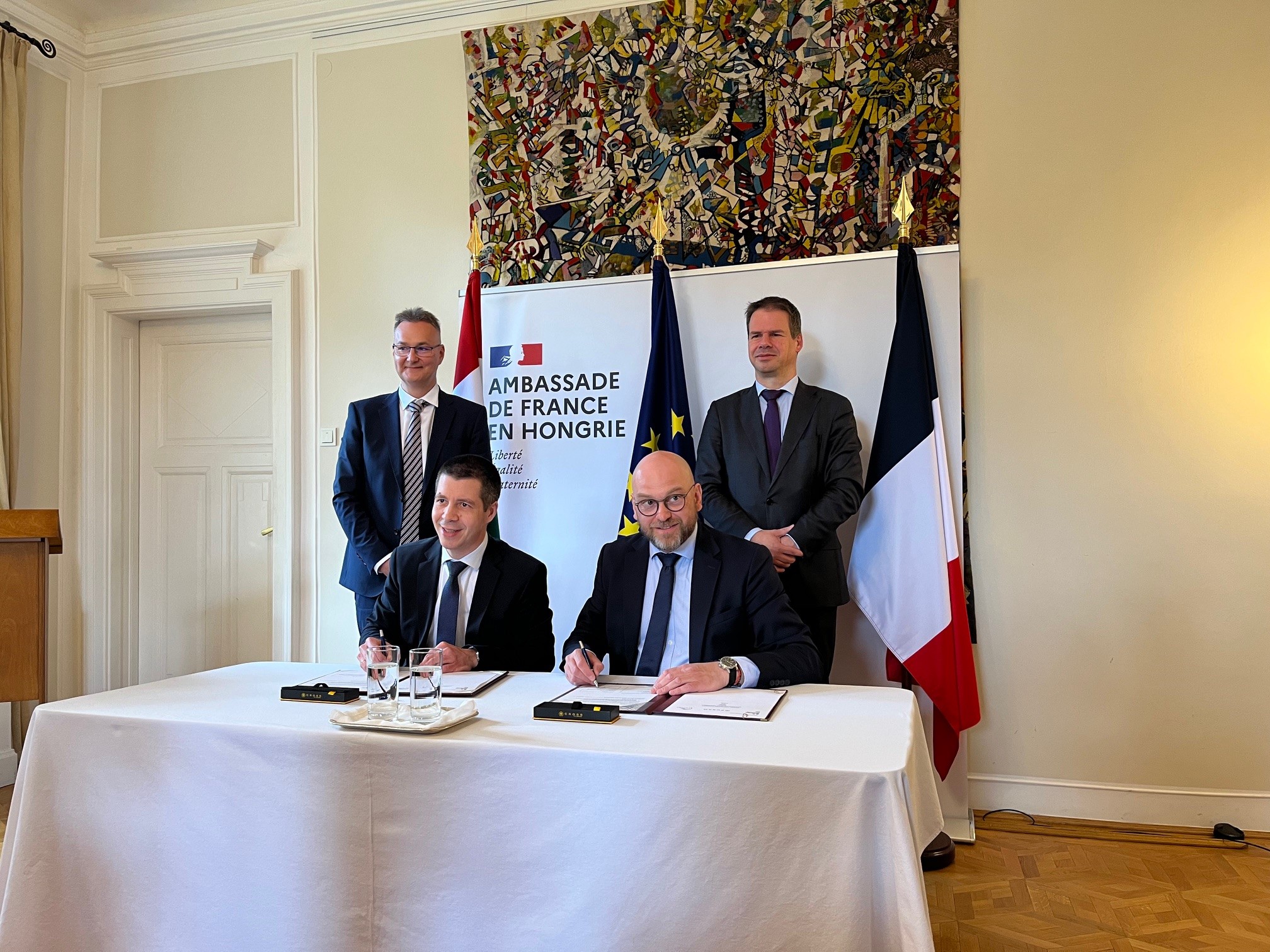Andra renews cooperation agreement with Puram, its Hungarian counterpart
On Monday April 7 in Budapest, Andra signed a cooperation agreement with its Hungarian counterpart, Puram, in the presence of the French ambassador to Hungary, M. Jonathan Lacôte.

In 2011, the Hungarian radioactive waste management organization (Puram) signed a five-year cooperation agreement with Andra. This more limited agreement covered support for Puram in the development of its deep geological disposal project for its most radioactive waste. Continuing this relationship, the cooperation agreement that has just been signed is the result of cross-visits by Andra engineers in Hungary and Puram engineers in France last year, the aim of which was to assess the value of setting up a bilateral cooperation agreement on a basis of mutual interest. Andra's experts identified a number of topics of interest for cooperation, which has led to the conclusion of this new agreement, signed on Monday April 7 in Budapest, in the presence of the French Ambassador to Hungary, M. Jonathan Lacôte. It will be valid for five years and will enable the two agencies to exchange operational, technical, scientific and strategic knowledge on radioactive waste management on a basis of mutual sharing of feedback.
Following the signing of the agreement, Mr. Lacôte, accompanied by the nuclear advisor responsible for the Visegrád Group countries (Hungary, Czech Republic, Slovakia, Poland) and an Andra delegation, visited the Hungarian low- and intermediate-level waste (L-ILW) repository at Bátaapáti. After a presentation of the national context in Hungary and of Puram's activities, and an interview for the local press, the French delegation was able to visit the repository guided by Bálint Nős, CEO of Puram.

The specific features of the Hungarian LILW repository at Bátaapáti
Hungary is one of the few countries that already operate deep geological repositories for low-level radioactive waste. The Hungarian site, known as the National Radioactive Waste Repository (NRWR), is located in Bátaapáti, near the Paks power plant. It was built in crystalline rock at a depth of 250 meters. Since 2012, it has been receiving operational waste from nuclear power generation, including operator protective equipment, contaminated tools and radioactive liquids that solidified when they were packaged as waste. It is also designed to receive waste from the dismantling of nuclear facilities. Following the evolution of its design, its total capacity currently stands at 20,000 m³. When completed, it will comprise six large, full-length disposal cells, served by 6 kilometers of tunnels.

